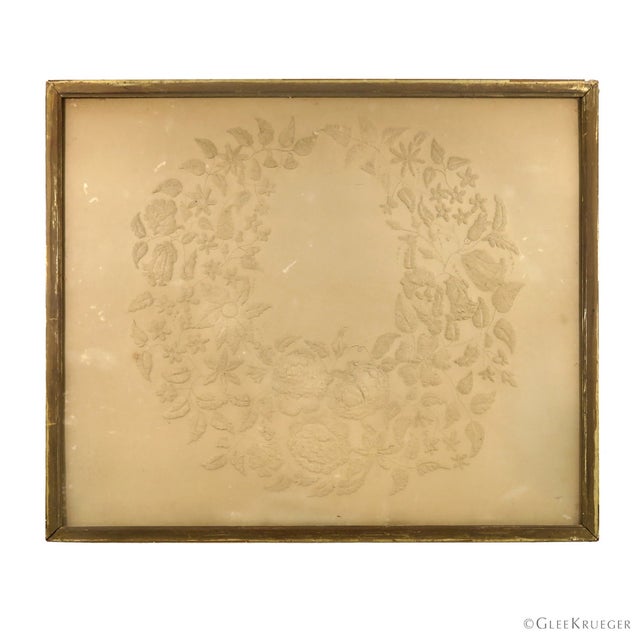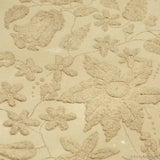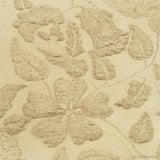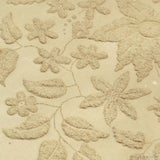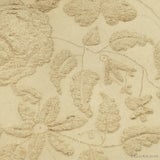- Other Needlework
- >
- 19th c. Paper Embroidery Pinprick Floral Wreath Theorem
19th c. Paper Embroidery Pinprick Floral Wreath Theorem
Remarkable pinprick wreath depicting a bouquet of botanicals.
During the late 18th c. / early 19th c., fancy paper arts were a favorite activity for creating decorative works in the home. Quilling and pinpricking were the craze. Pinpricking, also known as paper embroidery, didn't require special tools or much instruction. This simple practice allowed one to develop dexterity and hand/eye coordination.
According to 'The Young Ladies' Book', by A. Lady, published in 1829, a sketch was initially drawn on reverse side of the paper. The paper was then laid on a padded surface, so that the raised effect could be achieved. Pin pricking was worked on both sides of the paper in order to achieve the dimensional trapunto quality. Carefully pricking to create surface depth and shadow.
Pricking was also commonly used for prick and pounce transfer of designs for embroidery.
In painting, the technique of pouncing was traditionally used to transfer a sketch for a fresco or oil painting to the working surface. In Italian, it is known as spolvero.
ORIGINAL period frame with bubble glass.
DATE:
1820 - 1830
SIZE:
Frame: 17.5" x 14.25" x 0.75"
CONDITION:
Darkening to paper with some surface blemishes. Wear to gilt frame surface, with loss of gilding.
